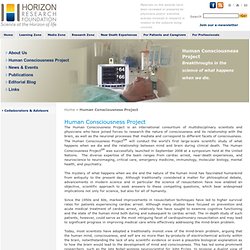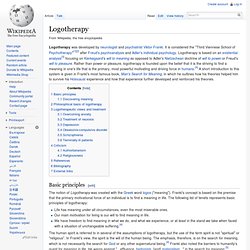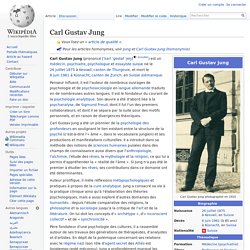

I enjoy reading. i play survival horror games... a lot. i dig psychology. i sleep in a bed. i drink water. i go to school.... i do things.... great and amazing things... lol
Feminism. Gaming. Cult films. Joss Whedon. Buffy the Vampire Slayer. MS. MS Multiple Sclerosis. Multiple Sclerosis. Solar Power. How to Hack Your Brain. Survival. Survive and escape. Zombies. Gaming. Video Gaming. Satire parody mock etc: Music, art & fun stuff. Divinities, Mythologies, Theologies. College. Tips and Tricks. Cool Stuff. Space. Nerdy Stuff. Conspiracy Theories. Liberal Arts. Philosophy.
Flowers in Ultra-Violet. The compilation of species will continue to be updated at irregular intervals.

All species listed here have been documented, and links are added whenever I can find spare time for updating. These images are made for illustrative purposes, not as artistic statements per se. However, there are lots of food for thought in the convoluted ways Nature expresses itself, so for once the artist can step backand let the subjects speak for themselves.
"Das Ding an Sich" to paraphrase Kant, or Eigenvalue of Nature. If you are unfamiliar with the botany, just select any species indicated as having a "strong" response to learn how this looks. However, not all species have the typical bull's-eye UV pattern, which may be confined to symmetrical flowers. The UV range of the spectrum has no predefined colours, so we are free to assign any colour we like. UV fluorescence may be a common trait to most flowers, but might be of temporary occurrence for parts of the flower. 700 medical cannabis studies sorted by disease. Medical marijuana uses - 700 medical marijuana clinical studies and papers NEW!

Now in PDF form 700 clinical studies PDF and HERE 700 uses of Medical Marijuana | Sorted by Disease | ADD - Wilson's Disease | Links to 700 Clinical Studies | Medical Marijuana Reference | Cannabis as Medicine Medical marijuana and cannabis studies A collection of clinical studies, papers and reference providing the ultimate resource for medical disorders helped by medical marijuana.
Botany of Desire (2009) - full. Marijuana Strain Effects. Science of what happens when we die. Home»Human Consciousness Project The Human Consciousness Project is an international consortium of multidisciplinary scientists and physicians who have joined forces to research the nature of consciousness and its relationship with the brain, as well as the neuronal processes that mediate and correspond to different facets of consciousness.

The Human Consciousness ProjectSM will conduct the world’s first large-scale scientific study of what happens when we die and the relationship between mind and brain during clinical death. The Human Consciousness ProjectSM was successfully launched in September 2008 at a symposium held at the United Nations. The diverse expertise of the team ranges from cardiac arrest, near-death experiences, and neuroscience to neuroimaging, critical care, emergency medicine, immunology, molecular biology, mental health, and psychiatry.
Contrary to popular perception, death is not a specific moment, but a well-defined process. Humanistic psychology. Humanistic psychology is a psychological perspective which rose to prominence in the mid-20th century in response to the limitations of Sigmund Freud's psychoanalytic theory and B.F.

Skinner's behaviorism.[1] With its roots running from Socrates through the Renaissance, this approach emphasizes individuals inherent drive towards self-actualization and creativity. It typically holds that people are inherently good. It adopts a holistic approach to human existence and pays special attention to such phenomena as creativity, free will, and human potential. It encourages viewing ourselves as a "whole person" greater than the sum of our parts and encourages self exploration rather than the study of behavior in other people. Self-determination theory. In the 1970s, research on SDT evolved from studies comparing the intrinsic and extrinsic motives, and from growing understanding of the dominant role intrinsic motivation played in an individual’s behavior[2] but it was not until mid-1980s that SDT was formally introduced and accepted as a sound empirical theory.

Research applying SDT to different areas in social psychology has increased considerably since the 2000s. Key studies that led to emergence of SDT included research on intrinsic motivation.[3] Intrinsic motivation refers to initiating an activity for its own sake because it is interesting and satisfying in itself, as opposed to doing an activity to obtain an external goal (extrinsic motivation).
Different types of motivations have been described based on the degree they have been internalized. Internalization refers to the active attempt to transform an extrinsic motive into personally endorsed values and thus assimilate behavioural regulations that were originally external.[4] Logotherapy. Basic principles[edit] The notion of Logotherapy was created with the Greek word logos ("meaning").

Frankl’s concept is based on the premise that the primary motivational force of an individual is to find a meaning in life. How to Hack Your Brain. Transpersonal. Carl Gustav Jung. Un article de Wikipédia, l'encyclopédie libre.

Vous lisez un « article de qualité ». Carl Gustav Jung Carl Gustav Jung photographié en 1910 Carl Gustav Jung (prononcé [ˈkarl ˈɡʊstaf ˈjʊŋ] écouter) est un médecin, psychiatre, psychologue et essayiste suisse né le 26 juillet 1875 à Kesswil, canton de Thurgovie, et mort le 6 juin 1961 à Küsnacht, canton de Zurich, en Suisse alémanique. Penseur influent, il est l'auteur de nombreux ouvrages de psychologie et de psychosociologie en langue allemande traduits en de nombreuses autres langues.
Carl Gustav Jung a été un pionnier de la psychologie des profondeurs en soulignant le lien existant entre la structure de la psyché (c'est-à-dire l'« âme », dans le vocabulaire jungien) et ses productions et manifestations culturelles. Père fondateur d'une psychologie des cultures, il a rassemblé autour de ses travaux des générations de thérapeutes, d'analystes et d'artistes. Maslow's hierarchy of needs. Pearltrees videos.
Pearltrees tips.